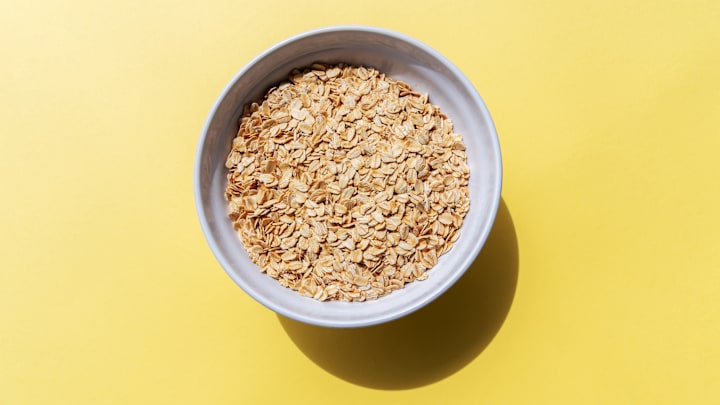You can tell when some foods go bad by looking for changes in texture, scent, and color. Other products don’t warn you that they’re past the point of palatability until you take a bite. According to Extra Crispy, the dried oats on your shelf fall into the latter category.
If you’re someone who goes through a package of oats—whether they’re rolled oats or steel-cut—in a few months or less, you may have never had to think about whether it has an expiration date. As long as they’re stored in a sealed container in a cool, dry place, most oats should last one to two years before they start to turn funky.
There are, however, a couple exceptions to this rule. Flavored oatmeal packets that contain added ingredients like dried fruit or cream will start to spoil a bit faster—somewhere around the six- to nine-month mark. Some fancier, organic oats can also have a shorter shelf life if they’re unstabilized. Most oats from big brands like Quaker treat their oats by dehusking them, rolling them, steaming them, and toasting them. This process stabilizes the grains and extends the expiration date of whatever oils they contain. If you purchase oats labeled “unsteamed” or “unstabilized,” those oils will turn bad a bit faster than the commercially processed stuff. But if you store them properly in the fridge, the oats should last you about 12 months.
If you’re not sure exactly how long your oats have been hanging out in the back of your cabinet, the good news is that they probably won’t hurt you even if they’re on the older side. They may taste a little sour or be discolored, but as long as you don’t see any mold growing, they’re not unsafe to eat. To be totally safe, you can store your oats in a glass or metal container to extend their shelf life even longer. And for a totally low-maintenance pantry, stock it with these items that almost never go bad.
[h/t Extra Crispy]
A version of this story originally ran in 2018; it has been updated for 2023.
